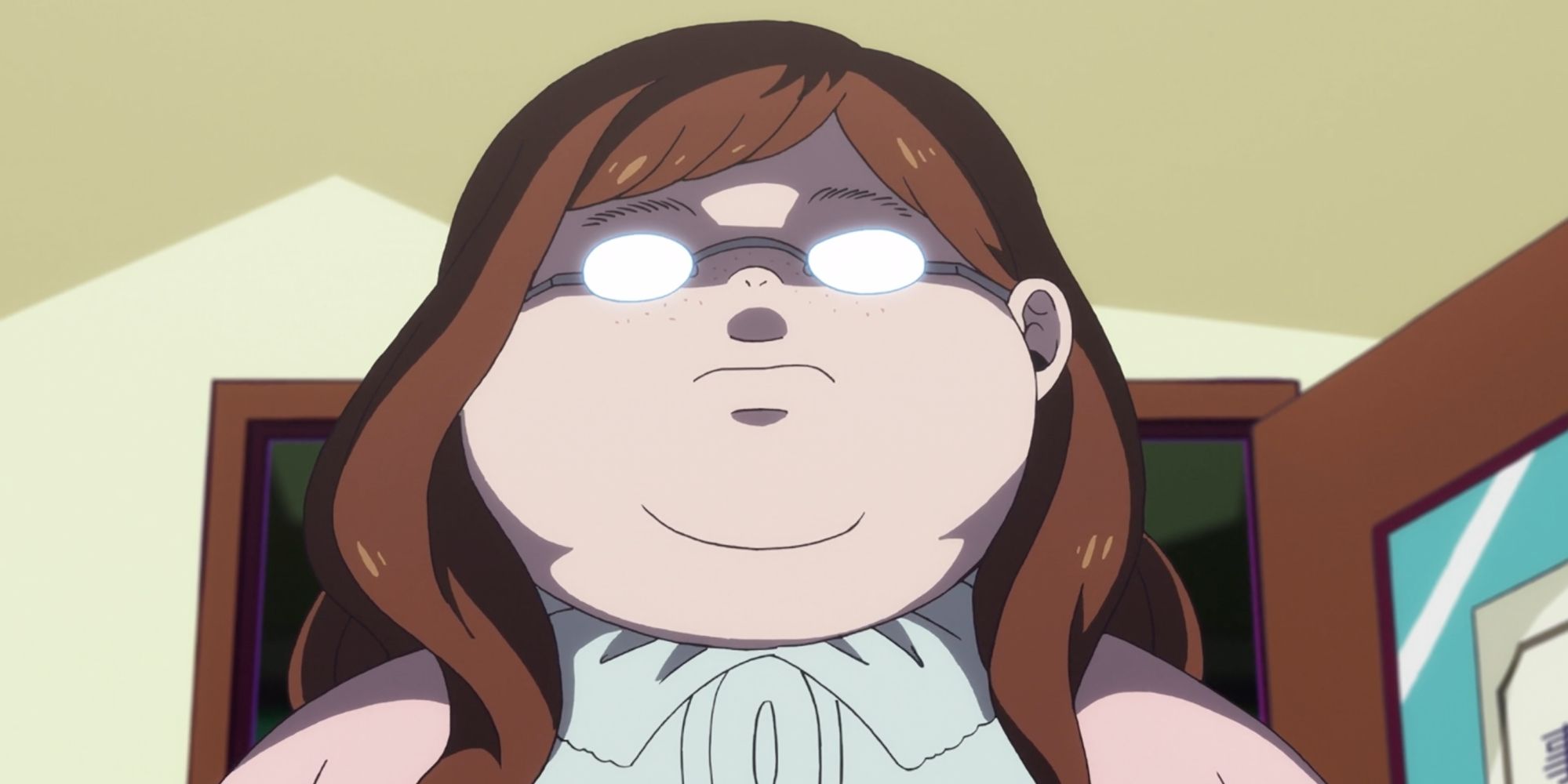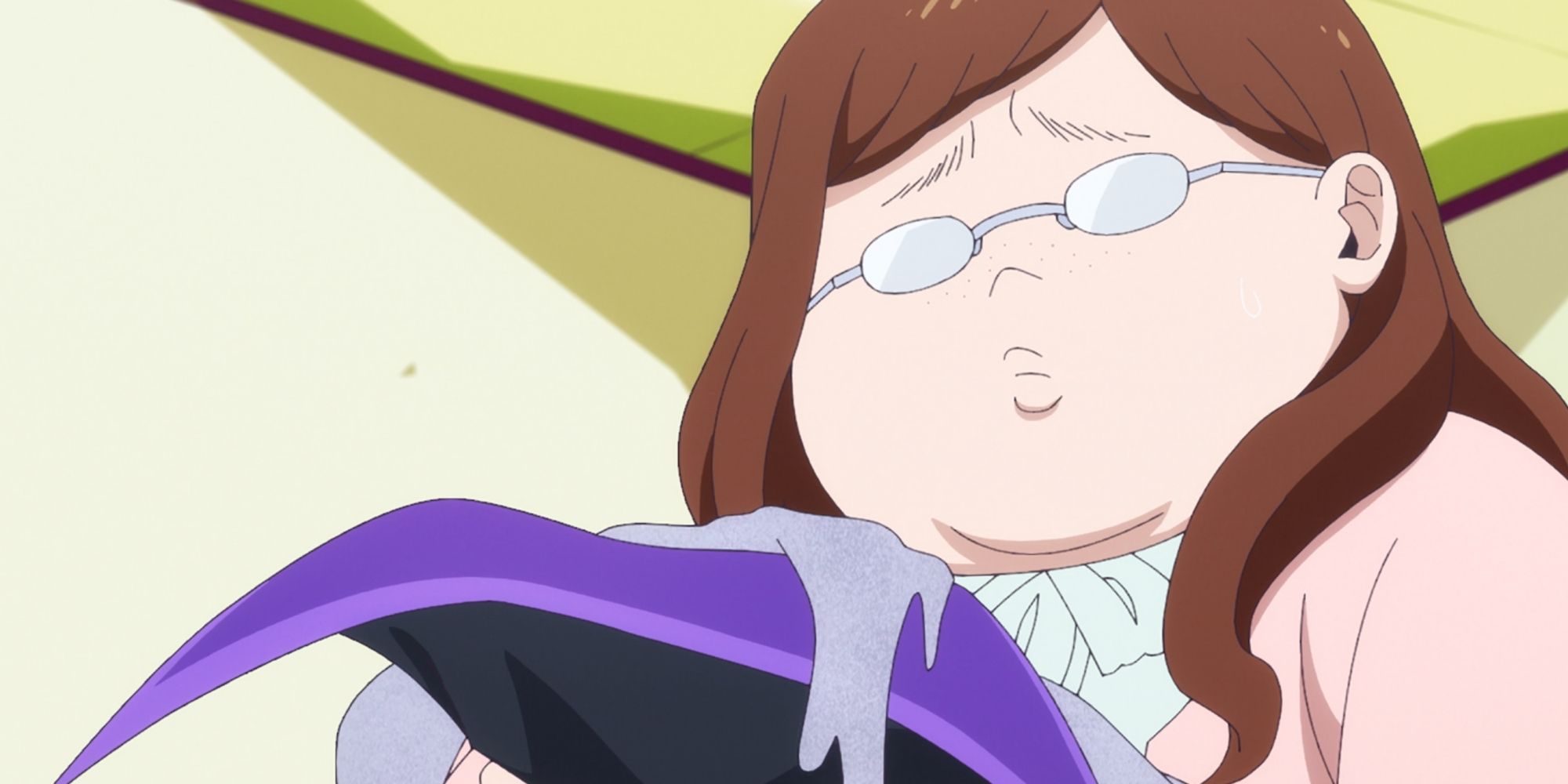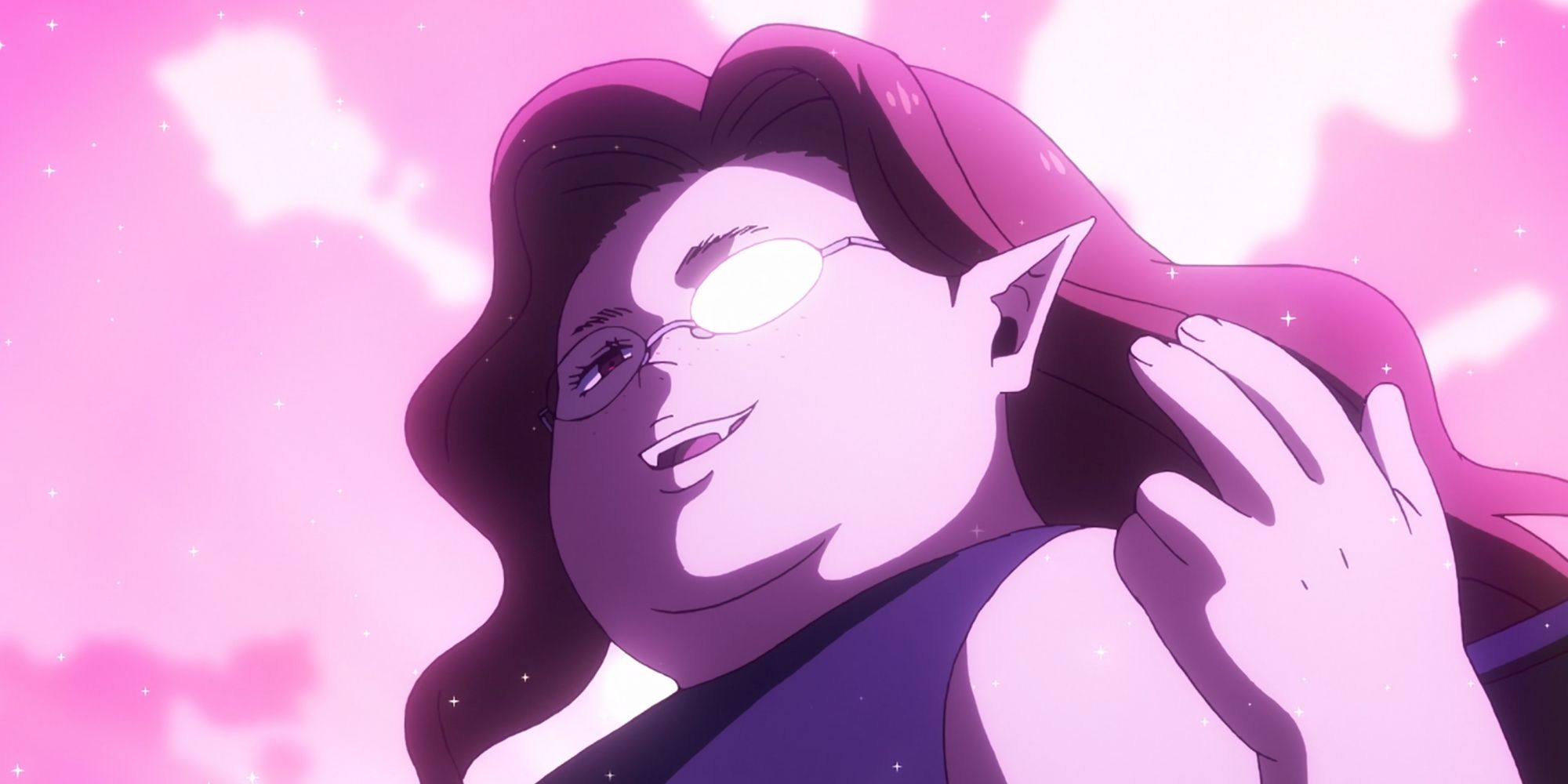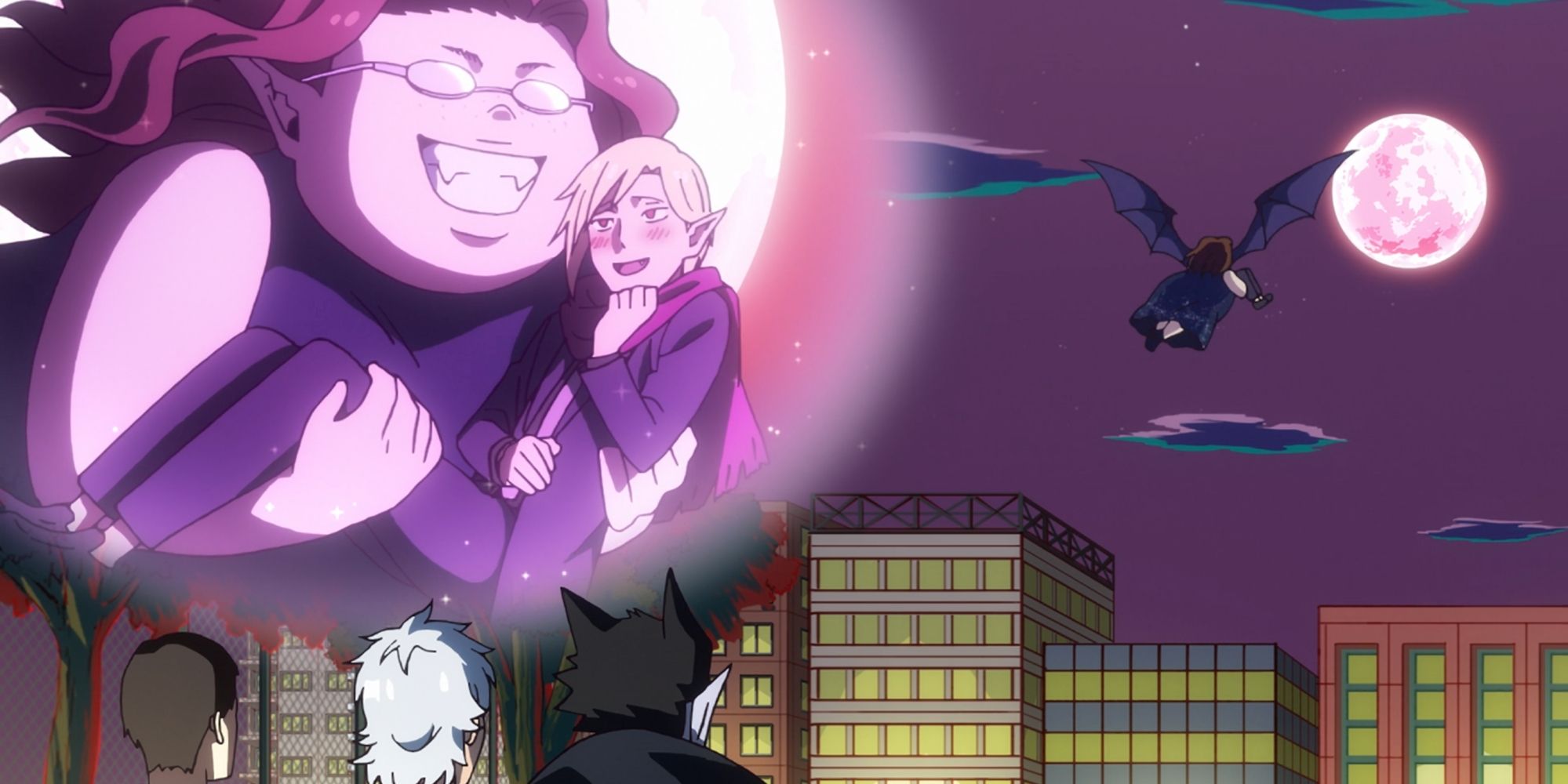WARNING: The following article contains spoilers for Episode 6 of The Vampire Dies in No Time, available on Funimation.
The Vampire Dies in No Time's sketch-like structure invites countless possibilities for all kinds of new characters to be introduced in every episode. Two such additions are the boyishly handsome vampire Adam and his admirer Maremi Gekkoin.
At the start of Episode 6, Adam bursts into Ronaldo and Draluc's apartment to hide from a stalker. This is Maremi, an overweight college student who wants Adam to turn her into a vampire so they can be together forever. In some ways, Maremi resembles trite stereotypical depictions of overweight women in anime, but the character takes an unexpected turn that challenges these clichés.
Maremi's Stereotypical Appearance
Some anime, such as Boruto, have three-dimensional and engaging depictions of larger female characters, but unfortunately, others still rely on caricatures with no depth. Anime characters with extremely exaggerated facial proportions can have their own kind of appeal, but the choices taken in depicting these characters tell the audience about the ideas they're supposed to represent.
The way Maremi is drawn adheres to a history of anime stereotypes of "ugly" bigger female characters. Her eyes are obscured by her constantly shining glasses, preventing any appearance of traditional "cute" anime eyes. This is similar to Kae Serinuma in the first episode of Kiss Him, Not Me, who has dot-like eyes before she loses weight, gains moe anime eyes, and becomes instantly popular. Maremi has exaggeratedly puckered lips, like Hanako Ohtani from Persona 4 and its anime adaptations. Even her hands and feet are drawn as being inexplicably oversized, giving her an almost monstrous appearance. Indeed, the way she emerges from the shadows to chase Adam is like something from a horror movie.
Maremi deludedly treats her pursuit of Adam like a game. Some Persona 4 fans defend the depiction of Hanako as a deliberately hatable "fat character" by pointing out her judgmental and entitled personality. However, just like Maremi's stalking, it feels like a justification for creators to dismiss the character as a whole and make her design a lazy shorthand for "an ugly character." Hanako is an especially ironic example because a major theme of Persona 4 is accepting and overcoming one's flaws, but she never gets the chance to confront her personal issues because her entire character is a punchline.
A New Vampire Empress
In typical Ronaldo and Draluc fashion, they don't do much to help their client. Running away from her, Adam is almost run over by a truck until Maremi pushes him out of the way, getting hit herself. Adam is overcome with guilt for being "rude" to her, but Maremi reassures him because he never called her "ugly," apologizing for "following him around." Filled with resolve, Adam bites Maremi to save her life, ultimately agreeing that "We're always going to be together, right?" Maremi sprouts wings and rises from the road, declaring herself "Vampire Empress Maremi Gekkoin."
"I feel radiant, like I returned to my true form," Maremi announces. This makes her transformation seem like a metaphor for self-acceptance and self-confidence. At this point, Maremi is drawn in a not radically different but symbolically more "beautiful" way. Her casual streetwear is replaced with a dazzling ballgown, and she looks through her glasses to reveal detailed, attentively-drawn eyes.
Making Maremi appear more stereotypically beautiful as soon as she goes from frantic stalker to cool vampire could be argued as equating attractiveness and character strength, but the point of this scene is not that Maremi becomes more attractive and thus somehow has more value as a person. The change in the way Maremi is drawn represents her newfound confidence, which is more important than being desirable. In fact, her love for Adam stops being an obsession at this point, as she calmly beckons him to follow her, which he does willingly. Maremi still loves Adam, but he no longer defines her.
Adam is amazed at Maremi's reemergence, blushing in genuine admiration. She carries him through the night, and Adam returns to the apartment to ask for a recommendation for a vampire gym so he can "become a man that is her equal." Even though Maremi's own transformation is separate from and does not require any validation from Adam, it's noteworthy that this series does not need to depict her losing weight before having her find happiness with a decent guy like in Kiss Him, Not Me.
A more negative interpretation of the scene could point out the brutal nature of Maremi's accident and argue the disturbing implications of Maremi needing to almost die a violent death before she can develop as a character. A counterargument to this is that this comedy has always had a cavalier attitude toward death, with main character Draluc dying multiple times every episode. Maremi's almost-death is actually one of the few times the series flirts with drama and genuine emotion. Additionally, Maremi had always wanted to be a vampire to begin with, even when her life wasn't in danger.
Is Maremi Gekkoin a refreshingly original presence in a medium with mostly typical thin characters, or an "ugly duckling" cliché? Either way, her story ultimately has more depth than audiences might have expected during her introduction as an obnoxious obsessive at the start of the episode. The Vampire Dies in No Time has introduced a lot of one-off characters, but Maremi and Adam feel like they have more stories to tell.




